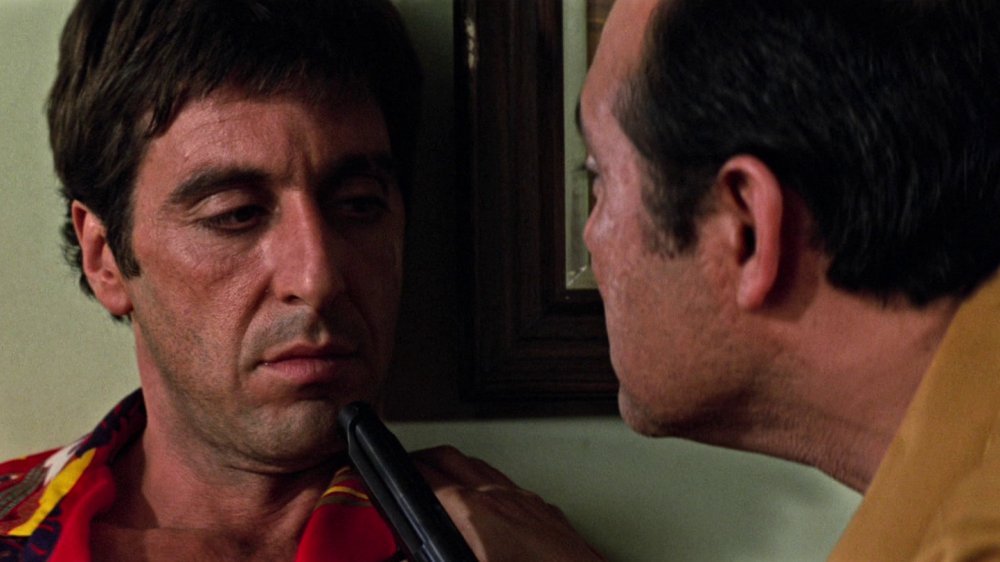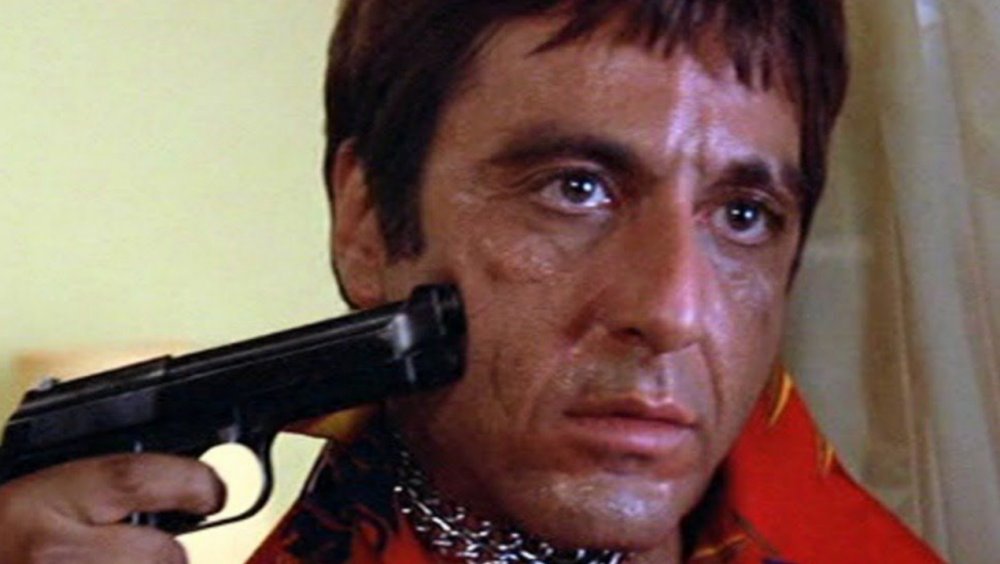The Most Overlooked Detail In Scarface
Nearly 40 years after its release, Scarface endures as one of the most memorable crime movies of all time. With its iconic lines, signature styles, and superb cast, the 1983 gangster movie remains so popular that it recently landed a reboot.
Al Pacino turned Tony Montana into a classic character, making the Cuban immigrant into a hothead protagonist known for his guts, his word, and of course, his scar. Though we see the prominent scar on the side of his face, Tony is only referred to by the infamous nickname once and it's in Spanish.
In one of the most memorable (and gruesome) scenes from the film, Tony, along with his close friend Angel (Pepe Serna), goes to a Miami Beach hotel to make a deal with the Colombian cartel. The deal goes very wrong. Hector (Al Israel), the Colombian gang leader, takes out a chainsaw and goes to work on Angel. As he prepares to do the same to Tony, whose hands are now tied to a pipe in the bathroom, Hector calls him "cara cicatriz" which translates to "scar face." Though Tony survives the ordeal after his friends rescue him, audiences never learn the origin of the scar.
Scarface was inspired by true events
Both the nickname and the chainsaw scene are based in truth. The "Scarface" nickname was inspired by notorious Prohibition-era gangster Al Capone, who was slashed in the face at 18 years old by the brother of a female bar patron Capone insulted. Years after, the press dubbed Capone "Scarface," which later inspired the title of Armitage Trail's novel, the 1932 film, and its subsequent remake 50 years later.
The chainsaw scene was — according to the book The Magic City Captured by Miami Vice, Scarface, Movies, and Burn Notice – also inspired by true events. The book says writer Oliver Stone "got the idea for the infamous and gruesome chainsaw motel scene from an actual police report that was very similar to the movie scene." Now that's truly terrifying.
Pacino's Scarface was not well received when it was first released. It took help from rap legends like Nas, Diddy, and Snoop Dogg to boost its popularity years later and secure it as one of the top crime films ever created, as it is properly remembered.

